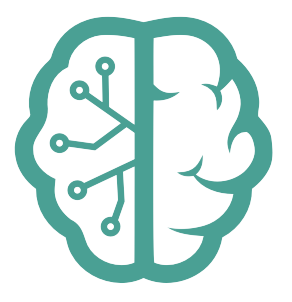In development stage and subject to changes.
Learn more at: netget.me
NetGet streamlines the orchestration of domains and networks with the simplicity of a pedal's press, enabling seamless connections across networked realms. Acts as a dynamic conduit, directing internet traffic to local services. Inspired by the vast digital landscapes of cyberpunk lore and the simplicity of guitar pedals.
NetGet is available as an npm package and can be installed globally using npm. This allows you to use NetGet from anywhere on your system.
npm install -g netgetOnce installed, you can start the NetGetX CLI by simply running the following command in your terminal:
netgetNetGetX serves as a front face to the public. Acting as a reverse proxy to redirect all traffic in a specify Port.
By using NetGetX, you ensure that NGINX is optimally configured to act as a robust, efficient channel, directing incoming traffic to the right internal endpoints without manual intervention.
NetGet is particularly useful in environments where multiple services or applications must be accessible through a single entry point, commonly known as a reverse proxy setup.
Local NetGet Setup: On your local machine, NetGet operates within your Node.js environment, managing local traffic and processing requests according to your configured rules. The GateWays doesn't directly face the internet and instead communicates with an external NetGetX instance that does.
npm install netget// NETGET
import NetGet from 'netget';
import { routes } from './GET/routes.js';
let netget = new NetGet();
netget.Gateway({ routes: routes }).listen();If no port specified the Gateway listens at http://localhost:3004/
This will set up a gateway that will listen to all traffic in a specific port, detect the domain, host, subdomain and act accordingly.
- Initializes a new instance of the Gateway class.
- @param {Object} config - The configuration object for the gateway.
- @param {Object} [config.host='localhost'] - The host name on which the gateway will listen.
- @param {number} [config.port=3432] - The port number on which the gateway will listen.
- @param {Object} [config.routes={}] - An object mapping domains to their respective request handlers.
- @param {string} [config.domainsConfigPath='./config/domains.json'] - The path to the domains configuration file.
class Gateway {
constructor({
host = process.env.HOST || 'localhost',
port = process.env.NETGET_PORT || 3432,
routes = {},
domainsConfigPath = process.env.DOMAINS_CONFIG_PATH || './config/domains.json'
} = {}) {
this.host = host;
this.port = port;
this.routes = routes;
this.domainsConfigPath = domainsConfigPath;
this.app = express();
this.initialize().catch(err => console.error('Initialization error:', err));
}It detect the host making the request, domain, subdomain and acts accordingly through the routes given and its handlers.
In a microservices architecture, NetGet can route requests to different services within your infrastructure, making it an ideal solution for developers looking to scale their applications horizontally. Each service can have its own domain, and NetGet will ensure that requests are forwarded to the correct service.
For personal web hosting, NetGet provides an easy-to-set-up gateway for routing traffic to various self-hosted applications. Users with several web applications running on a home server can use NetGet to manage access to these applications through different domains.
Combined with authentication layers, NetGet can control access to various parts of a web infrastructure, ensuring that only authorized users can access specific services.
this.me - this.audio - this.text - this.wallet - this.img - this.pixel - be.this - this.DOM - this.env - this.GUI - this.be - this.video - this.atom - this.dictionaries
Each module in all.this represents a specific datastructure. These classes encapsulate the functionalities and data specific to their domain.
all.this not only aggregates these modules but also provides utilities to facilitate the integration, management, and enhancement of these data structures. For example:
The integration with cleaker ensures each module instance has a unique cryptographic identity, enhancing security and data integrity.
visit: Neurons.me Glossary
-
License: MIT License (see LICENSE for details).
-
Privacy Policy: Respects user privacy; no collection/storage of personal data.
-
Terms of Usage: Use responsibly. No guarantees/warranties provided. Terms | Privacy
Learn more at https://neurons.me
Author: SuiGn

